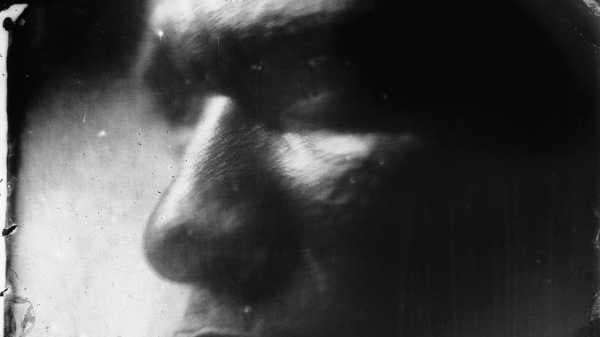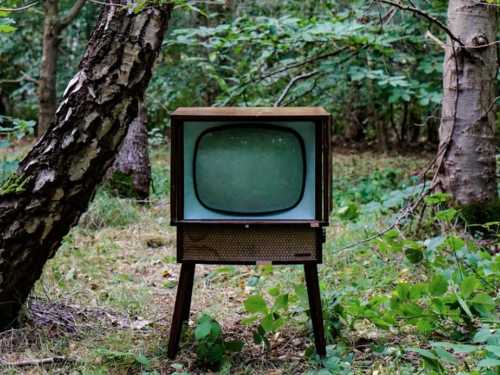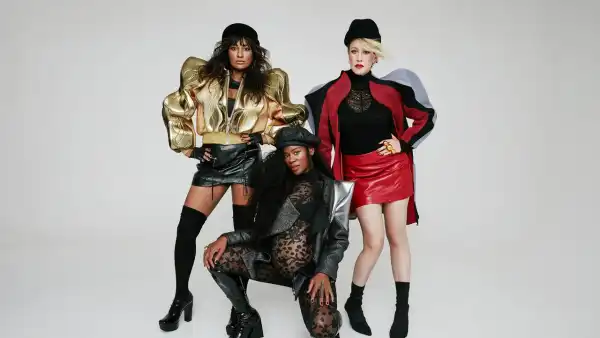
We’re in Virginia, where the photographer Sally Mann was born, in 1951,
and where she still lives, making work so rooted in place that it is
inseparable from history, from lore, and from the effects of slavery.
Like Janus, she looks forward as she looks back, at all those bodies
that made her and her place in Virginia, and into the landscape, filled
with rutted earth, big or low clouds, storybook fantastic vegetation,
and the Southern light that reminds so many of photography itself—dark,
as Joan Didion wrote, and glowing “with a morbid luminescence.” That
entire vision is a part of Mann’s photographs, as she asks in these
images of family members, roads, rivers, churches, and the effects of
blackness on whiteness and whiteness on itself: Abide with me. And it
all does—voices, sounds, the invisible things that Mann’s haunted and
haunting photographs allow us to see.
“Blackwater 9,” 2008-2012.
Photograph by Sally Mann
“Blackwater 20,” 2008-2012.
Photograph by Sally Mann
“The Two Virginias #4,” 1991.
Photograph by Sally Mann
Mann has written, “Even among the competitive crowd of southern states,
Virginia stands out in its obsession with the past. . . . Physically,
the reminders are everywhere.” Virginia, where the first black bodies to
arrive on these shores from Africa landed at Point Comfort, on the James
River, after suffering and shitting and losing their respective minds on
an English ship named the White Lion—a bitter irony. This was in 1619.
At Point Comfort, some of the Negroes’ bodies were sold in exchange for
food, and some were transported to Jamestown, Virginia’s former capital.
In 1639, English settlers established the Jamestown Church, one of the
oldest houses of worship in America, and in that church they read the
Book of Common Prayer and gave voice to their sins during morning
prayers and evening prayers—confessing what? The agony of looking at
black bodies harvesting tobacco in mineral-rich Virginia soil for
profit, and then building churches and families based on all that profit
and the dream of more? When the organ played, the congregation would
stand, perhaps singing lyrics by the Scottish Anglican poet Henry
Francis Lyte:
When other helpers fail, and comforts flee,
Help of the helpless, O abide with me!
“Oak Hill Baptist 01:01,” 2008-2016.
Photograph by Sally Mann
In 1998, Mann started to travel deeper into the South—to Louisiana,
Mississippi, and so on, making a collective portrait of the troubling
and troubled landscape. The gothic scene would have been powerful in
its own right, but Mann’s fascinating clinical distance adds another
eerie layer to the pictures; she sees the world as it is and wonders,
through the camera, how it became what it is. Mann does not rearrange
the fact of the earth in her work, but she doesn’t turn away from the
death that lies in it, either.
“Men, Ronald,” 2006-2015.
Photograph by Sally Mann
The Southern churches that Mann photographed more than a decade or so
later are surrounded by outrageous nature, roots coming out of the
earth in Virginia and Georgia and Louisiana while the earth sweats, tree
limbs so big and wide they look like an overgrown monster, and the
memory of those black bodies hanging from those fat limbs. Mann’s
churches have no need to pretend that they are other than what they are:
images of shelter built on complicated ground. And while there are no
figures in those churches, they are filled with ghosts. (Flannery
O’Connor: “Ghosts can be very fierce and instructive.”) Most of the
colored people lining the pews of their churches didn’t aspire to be
white, which is the color of power; they aspired to survive, which is
the color of humanity. Faith was the shield, was the way, and the church
was the meeting place where working-class black men, among others,
didn’t have to live up to the degradation the white man thought should
be their portion, all the better to emphasize his power. Now those men
are standing with their wives and children, singing, asking Him to abide
with me and you and our neighbor over there, too:
Who like Thyself my guide and stay can be?
Through cloud and sunshine, O abide with me!
“The Two Virginias #1,” 1988.
Photograph by Sally Mann
“The Two Virginias #3,” 1991.
Photograph by Sally Mann
As Mann journeyed into the Deep South, she was guided in part by the Southerner’s interest in lore, place, and the ties that bind and abide, along with her willingness to revisit or discover where she had not gone before, to see those places and faces and territories that her eyes saw growing up but maybe hadn’t sufficiently registered from the distance of her class and race. It was the world in which her whiteness flourished. She writes, in her memoir, “Hold Still,” “I had always seen, but not seen, black men on the fringes of white life, mowing, tending bar, or waiting for work in the shade of the big trees at the courthouse.” Who were these men on the margins? Who were the black people who called her “Miss” and her brothers “Master”? To hear these words—the language of subservience, of the supplicant—is to be in an old familiar Southern movie, a black strip of film illuminated by scenes of violence and subjugation: there can only be a master if there is a “nigger.”
“Blackwater 17,” 2008-2012.
Photograph by Sally Mann
Who was this white girl who wanted to know the stories behind those black faces? When it came to ideas about the South, and by extension her cultural and political inheritance and how the region worked, Mann “had to learn many things” on her own. As a young person, she was fascinated by a story that was endemic to Virginia and Virginia ways: the minister Nat Turner, his revolt, capture, and death. As an adult, Mann photographed in and around the Blackwater and Nottoway Rivers, which served as one line on the Underground Railroad. (This path to freedom, and especially the fact that a white woman was recording it, brings to mind the controversy that surrounded William Styron’s powerful novel “The Confessions of Nat Turner.”)
“Men, Stephen,” 2006-2015.
Photograph by Sally Mann
I think that the artists who “get to” speak are those who do justice to the
country’s complexity, in work that is as dense, strange, and
incomprehensible as the country that made them—and made Emmett Till and,
before him, Nat Turner. Contemporary white artists post-Faulkner,
post-O’Connor, who want to go to the heart of it are not “imperialist”
for the most part but, rather, just as perplexed as the land that made
them. In her work, Mann doesn’t assume that she is speaking about the black experience but about a black experience—one that is linked to
the Virginia that made her, and made her beloved family housekeeper,
Virginia (Gee-Gee) Carter, and made all the black men she did not know.
The landscape as story, the story as landscape, and the drama of race.
“St. Paul African Methodist Episcopal 01:01,” 2008-2016.
Photograph by Sally Mann
“Unless the novelist has gone utterly out of his mind, his aim is still
communication and communication suggests talking inside a community,”
O’Connor wrote, in her 1963 essay “The Regional Writer.” “Our best
writers are able to do this. They are not alienated, they are not lonely
suffering artists gasping for purer air.” The community members whom
Mann speaks of and with in her memoir and in these photographs are alive
and intimate, but I think loneliness asks Mann to abide with her, too.
It’s not just the loneliness we feel when we see the inevitable gulf
between the thing being observed and the observer but also the great
loneliness found in the South meeting the loneliness of the Southerner.
In a 1946 essay about his native New Orleans, Truman Capote said that,
to him, the city’s streets had “long, lonesome perspectives.” Mann’s
view—her understanding of the long, lonesome perspective even within
community—is that the South can be unbearable to look at. And yet she
makes it bearable enough to make a photograph from it. A question I
discovered early on, looking at her landscapes, is, When will the South
stop being the South? Stop being a place of blood ties, spilled blood,
black and white blood, blood money, bloody earth?
“Singer, DJ,” 2006-2015.
Photograph by Sally Mann
This piece was drawn from “Sally Mann: A Thousand Crossings,” by Sarah Greenough and Sarah Kennel, which is out in March from the National Gallery of Art, Washington, and the Peabody Essex Museum, Salem, in association with Abrams Books.
Sourse: newyorker.com






